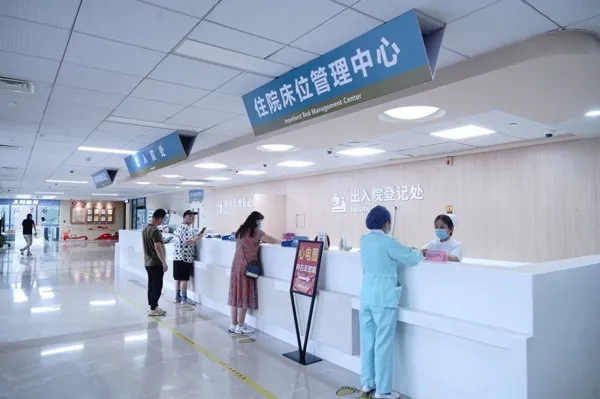Human umbilical cord mesenchymal stem cell injection for the treatment of heart failure enters clinical trials, stem cells may open a new era of heart failure treatment
The number of patients with cardiovascular disease in my country currently reaches 330 million, among whom it is not uncommon for patients to progress to heart failure. About 8.9 million patients suffer from it, and the 5-year mortality rate exceeds 50%. Current treatment methods such as medical and surgical drugs, pacemakers, and heart transplants all have certain shortcomings. Are there any breakthrough new treatments? Reporters recently learned from Shanghai Oriental Hospital that the "Human Umbilical Cord Mesenchymal Stem Cell Treatment for Heart Failure Injection" developed by the team of Liu Zhongmin, head of the clinical-grade stem cell bank and honorary president of the National Stem Cell Transformation Resource Bank, has entered the Phase I clinical trial stage. This is also my country’s first drug in this field.
What are human umbilical cord mesenchymal stem cells? Jia Wenwen, director of the GMP Laboratory of the Stem Cell Base of Dongfang Hospital, said that the "stem" of stem cells means origin, and its function is to control and maintain cell regeneration. In terms of differentiation potential, stem cells can be divided into totipotent, multipotent and unipotent. For example, embryonic stem cells have developmental totipotency and can theoretically be induced to differentiate into all types of cells in the body; while human umbilical cord mesenchymal stem cells are Pluripotent stem cells.
"It is a stem cell extracted from umbilical cord mucus. It has tissue repair, immune regulation, and anti-inflammatory effects. It has low immunogenicity and can differentiate into a variety of cell types. It has broad application potential in regenerative medicine, especially in repair. Damaged cartilage tissue, bone and cardiac muscle. At the same time, human umbilical cord mesenchymal stem cells can also regulate immune responses and reduce inflammation by secreting specific cytokines, which is of great significance for the treatment of autoimmune diseases and chronic inflammatory diseases."
Liu Zhongmin introduced that heart failure is a group of clinical syndromes due to abnormalities in cardiac structure and/or function that lead to impaired ventricular filling and/or ejection capacity. It is the final stage of the development of most cardiovascular diseases. As we age, the disease The rate and incidence increased significantly. "At present, there are mainly clinical methods such as drug treatment, revascularization, cell and gene therapy, etc., but most of them will relapse and cannot solve the real problem of the heart. If we go to the last step - heart transplantation, not only will there be few donors, but the trauma will be huge. , the financial burden is heavy, and it is difficult for patients to return to society, and their quality of life is greatly reduced.”
The "White Paper on Cardiovascular Surgery and Extracorporeal Circulation Data in China in 2022" shows that coronary artery bypass grafting accounted for 21.1% of the total number of cardiac surgeries that year. This revascularization treatment can delay the progression of heart failure to a certain extent. , but cannot regenerate dead myocardium.
How to "resurrect" cardiomyocytes? Liu Zhongmin's team focused on the regeneration and repair capabilities of stem cells.
In recent years, accelerating stem cell medical research, clinical transformation and industrialization has become a common goal of the biomedical industry. As early as 2013, Dongfang Hospital, located in Pudong New Area, established the Stem Cell Engineering Translational Medicine Center in conjunction with the Shanghai Advanced Institute of Advanced Studies of the Chinese Academy of Sciences and other institutions, creating the country's first stem cell storage-preparation and quality inspection-basic research-preclinical research-clinical research. —The entire industrial chain of clinical translation applications.
Liu Zhongmin still remembers that at that time, in the context of my country's unclear stem cell industrialization policy, Shanghai was the first to conduct trials. In 2014, the Zhangjiang High-tech Industrial Development Zone Management Committee invested 255 million yuan to build a stem cell industry base. Dongfang Hospital took advantage of Dongfeng to undertake The stem cell translational medicine industry base project was completed. The research and development of "Human Umbilical Cord Mesenchymal Stem Cell Treatment for Heart Failure Injection" is one of the achievements. It was approved as a project planned by the Shanghai Municipal Science and Technology Commission in 2017. It completed the national stem cell research project registration in 2019 and officially obtained the drug in January this year. Clinical Trial Phase I Clinical Implicit License.
Tang Hongming, director of the Stem Cell Base Office of Dongfang Hospital, said that preclinical animal experiment results suggest that through studies on mouse myocardial infarction models and pig coronary artery ligation-induced heart failure models, the injection can regulate the microenvironment of myocardial tissue through paracrine effects, which is beneficial to ischemia. It has a significant inhibitory effect on cardiomyocyte tissue damage in cardiomyopathy, increases animal heart function, promotes vascular regeneration, and reduces myocardial apoptosis.
What is the current status of research on mesenchymal stem cells in the treatment of heart failure globally? Liu Zhongmin said that there are currently 12 randomized double-blind studies, with a total of 823 patients enrolled. The results showed that the treatment reduced the mortality rate by 27%, the readmission rate by 47%, and the minute walking distance increased by 117 meters. Germany and Japan each have a treatment Stem cell products for heart disease are already on the market. "We hope to develop new drugs that belong to the Chinese population. If we can reduce the mortality rate by a quarter, it will reduce the human, material and economic burden on individuals, families and even society."
In August 2022, Dongfang Hospital, the backing unit of the National Stem Cell Transformation Resource Bank, has signed a "Technology Transfer Contract" to transfer relevant technologies and achievements, and will give priority to drug registration applications and subsequent clinical trial development in China. After entering the clinical trial stage, what are the key technical bottlenecks that need to be overcome urgently?
"Compared with traditional chemical drugs, stem cell quality inspection lacks unified standards and specifications in terms of methodological verification, and there is a lack of standard products for surface markers, cycle, apoptosis and cell function." Liu Zhongmin said frankly that the preparation is safe, qualified, and High-quality cell products are a long way to go, especially to ensure uniform quality in different batches. "On the other hand, animal experiments can use samples with tracers for research. After entering the human body, which organs the stem cells go to, how long they stay, and whether they can solve the problem all require careful data support."
It is reported that the phase I clinical trial of this drug mainly enrolls patients with severe chronic ischemic heart failure aged 35 to 75. The treatment plan requires stem cell injection during thoracotomy. The key to ensuring the safety of the subjects lies in overcoming the Postoperative infection, bleeding and other risks. At this stage, the relevant subjects are all from Dongfang Hospital, and will be recruited in conjunction with a number of tertiary hospitals in the Yangtze River Delta region to conduct a full scientific evaluation of clinical safety and effectiveness.
"From chemical drugs to physical therapy to cell therapy, the medical community has ushered in the 'third revolution'." Liu Zhongmin said that stem cell medicine is like the "wings of development" and he expects Shanghai to seize international opportunities in the development of the stem cell industry. In the future, an achievement transformation model will be formed that integrates policy supervision, product incubation, achievement trading and clinical verification, which will ultimately benefit more patients.





